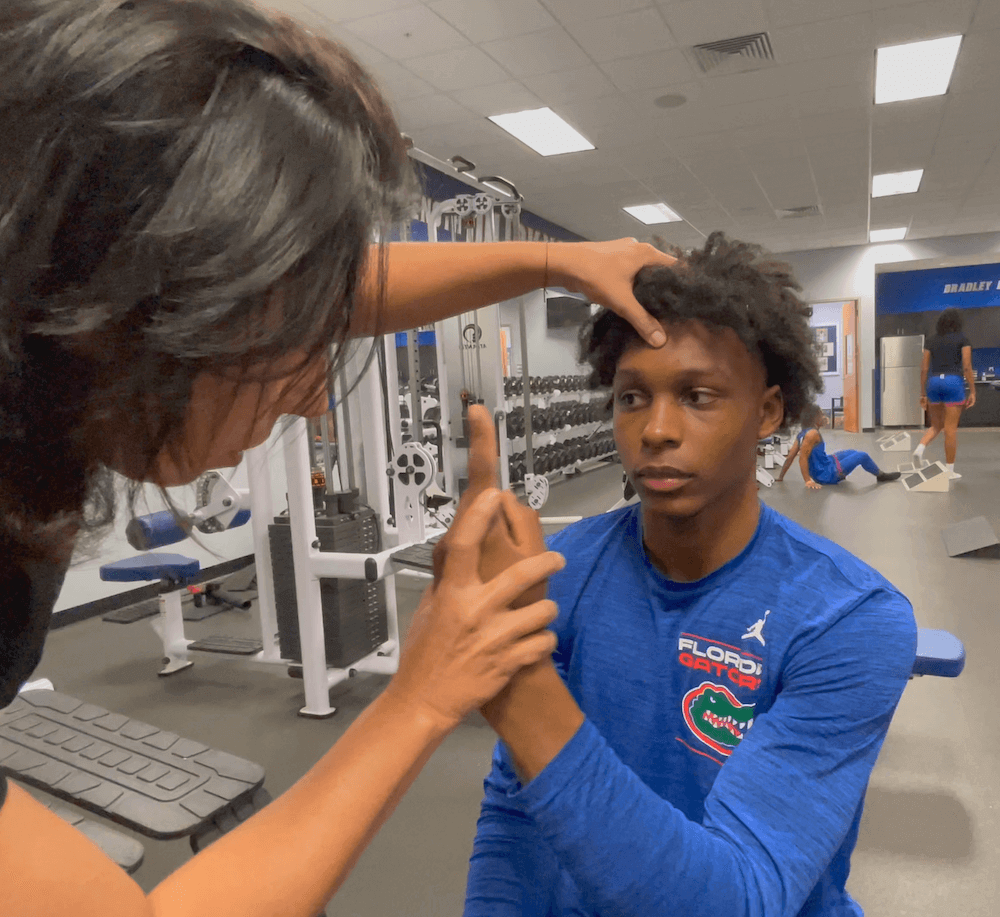The Connection Between Dopamine and Eye Exercises
The eyes are often referred to as the “windows to the soul,” but what if we told you that there’s more to eye health than meets the eye? The connection between dopamine, a neurotransmitter crucial for numerous functions in the body, and eye exercises is an intriguing area that blends neuroscience with ophthalmology. This article delves into the various ways eye exercises can influence dopamine levels and, conversely, how dopamine affects eye function.
The Function of Dopamine in Eye Health
The relationship between dopamine and eye exercises is dynamic, reciprocal, and still a subject of ongoing research. The synergy between these two aspects has implications not just for eye health but overall wellness. Engaging in eye exercises with an understanding of their potential impact on dopamine offers a holistic approach to health that goes beyond mere physical well-being.
The Influence of Eye Movements on Dopaminergic Pathways
1. Regulation of Neural Activity: Vertical eye movements require precise coordination of multiple brain regions, including those directly influenced by dopamine. The substantia nigra and the ventral tegmental area are two primary areas in the brain where dopamine is produced. These areas are connected to others that control eye movements, such as the superior colliculus and the frontal eye fields. The activity in these eye movement control centers can, in turn, influence dopamine production by providing sensory feedback to the dopaminergic neurons. For instance, when engaging in activities that require frequent vertical eye movements, such as climbing stairs or looking at objects at different heights, the brain may signal an increased need for dopamine to enhance coordination and focus.
2.Adaptation and Learning: Dopamine plays a crucial role in the brain’s reward and learning mechanisms. When vertical eye movements are executed successfully, leading to successful navigation or task completion, dopamine can be released as a form of positive reinforcement. This release enhances the learning of motor patterns and cognitive strategies that improve performance in similar future tasks. It suggests that regular stimulation of these eye movement pathways could potentially enhance dopaminergic efficiency over time, which is beneficial for both motor and cognitive functions.
Sensorimotor Integration: The process of integrating sensory input with motor actions is fundamental in executing coordinated movements. Dopamine is essential for optimizing this integration. Efficient vertical eye movements require the brain to adjust motor output based on visual and spatial information quickly. By affecting dopamine levels, these movements can influence how effectively the brain integrates and responds to sensory information, thereby affecting overall motor control and sensory perception.

The Influence of Eye Movements on Dopaminergic Pathways
Some eye exercises require focus, concentration, and spatial awareness. These exercises may stimulate parts of the brain linked to dopamine production. For example, exercises that involve shifting focus between near and far objects may engage the visual cortex and other brain areas that influence dopamine levels. Vertical eye movements could influence dopamine release through several potential neurological mechanisms:
1. Neural Pathway Activation: Vertical eye movements are controlled by the oculomotor nerve, which originates in the midbrain, a region that also houses important groups of dopamine-producing neurons, such as those in the substantia nigra. The physical proximity and potential neural interconnections between these structures suggest that activation of the neural circuits controlling eye movements could concurrently influence nearby dopamine-secreting neurons.
2. Motor and Reward Systems Interaction: The brain’s motor systems, which include the control of eye movements, and its reward systems, where dopamine plays a central role, are highly integrated. Actions involving eye movements could engage these systems in a way that either directly or indirectly modulates dopamine levels. For example, the execution of precise eye movements, critical in many survival-related tasks, might engage reward pathways as part of learning or performance feedback mechanisms.
3. Feedback Loops: There may be feedback mechanisms where the activation of eye movement circuits sends signals back to the dopamine-producing areas to modulate their activity. This could be part of a broader regulatory system where the brain adjusts dopamine release based on sensory input and motor output, optimizing behavior and physiological responses.
4. Research Findings: Some studies suggest that eye movements, including vertical saccades (rapid movements of the eye between two or more phases of fixation in the same direction), can influence areas of the brain involved in dopamine release. Research, particularly involving patients with Parkinson’s disease, has explored how motor control impairments (including those affecting the eyes) relate to dopamine dysregulation. These studies often look at how treatments like deep brain stimulation, which affects dopamine levels, can alter eye movement characteristics.
While the exact pathways and mechanisms are complex and still under investigation, these theories provide a foundation for understanding how something as seemingly isolated as vertical eye movements might interact with brain regions involved in dopamine regulation.
The Connection Between Dopamine and Posture
The way we hold ourselves physically, our posture, has long been connected to our mood and mental well-being. But did you know that dopamine plays a critical role in determining posture as well? Here’s a detailed exploration of the connection.
The Role of Dopamine in Motor Control
Dopamine is not just the “feel-good” chemical; it’s also vital for smooth and coordinated motor control. The following points highlight how dopamine influences posture:
-
Muscle Coordination and Balance: Dopamine assists in the smooth functioning of muscles and helps maintain balance and posture. A deficiency in dopamine can lead to muscle stiffness and difficulty in maintaining an upright position.
-
Influence on Mood and Confidence: Dopamine’s role in regulating mood and self-confidence can indirectly affect posture. A positive, confident person often stands tall and upright, reflecting the inner state of well-being fueled by dopamine.
-
Parkinson’s Disease Connection: Parkinson’s Disease, a condition characterized by a significant reduction in dopamine production, often leads to postural instability. Patients may experience stooped posture and difficulty with balance and coordination.
How to Boost Your Dopamine to Improve Posture
Understanding the connection between dopamine and posture offers opportunities to improve physical stance through natural ways to boost dopamine:
-
Engage in Regular Exercise: Physical activity, as mentioned earlier, not only uplifts your mood but can also enhance your posture by boosting dopamine levels.
-
Eat a Balanced Diet: Nutrient-dense foods that promote dopamine production can indirectly contribute to better posture by improving muscle function and mood.
-
Mind-Body Practices: Mindfulness and meditation practices that increase dopamine can also foster a connection between mind and body, leading to improved posture awareness.
-
Consult Healthcare Professionals: If posture issues are persistent, it may be beneficial to consult healthcare providers who can assess whether dopamine-related medical conditions might be a contributing factor.
The Interconnected Nature of Dopamine and Posture
The connection between dopamine and posture is a testament to the interconnected nature of our physical and mental well-being. An optimal level of dopamine not only makes us feel good mentally but also supports our physical appearance and function.
By adopting a holistic approach that includes a healthy diet, regular exercise, mindfulness practices, and medical consultation when needed, you can boost your dopamine levels and improve your posture, enhancing both your physical and emotional well-being.
Clinical Implications of Dopamine and Eye Movement Research
Understanding how vertical eye movements impact dopamine has significant clinical implications, particularly in diagnosing and treating neurological disorders:
-
Parkinson’s Disease: In Parkinson’s disease, where dopaminergic neurons degenerate over time, patients often experience difficulties with eye movements. Studying these difficulties can provide insights into the progression of the disease and the effectiveness of treatments aimed at increasing dopamine levels.
-
Psychiatric Disorders: Disorders like schizophrenia, where dopamine regulation is often impaired, can also manifest as abnormalities in eye movement. Observing these abnormalities can help in understanding the extent of dopaminergic dysfunction and tailoring pharmacological interventions more effectively.
-
Developmental Disorders: In developmental conditions such as ADHD, where dopamine plays a role in attention and executive functioning, irregularities in eye movements could serve as a diagnostic marker or a gauge of treatment efficacy.
References:
1. Barrett, B. T. (2009). A critical evaluation of the evidence supporting the practice of behavioural vision therapy. Ophthalmic and Physiological Optics, 29(1), 4-25. doi:10.1111/j.1475-1313.2008.00607.x
2. Ciuffreda, K. J., Kapoor, N., Rutner, D., Suchoff, I. B., Han, M. E., & Craig, S. (2007). Occurrence of oculomotor dysfunctions in acquired brain injury: A retrospective analysis. Optometry, 78(4), 155-161. doi:10.1016/j.optm.2006.11.011
3. Richman, J. E., & Garzia, R. P. (1987). Effectiveness of eye exercises in the school-based vergence/accommodative facility therapy program. American Journal of Optometry and Physiological Optics, 64(6), 415-420.
4. Thiagarajan, P., & Ciuffreda, K. J. (2013). Effect of oculomotor rehabilitation on vergence responsivity in mild traumatic brain injury. Journal of Rehabilitation Research and Development, 50(9), 1223-1240. doi:10.1682/JRRD.2012.12.0216
5. Rouse, M. W., Borsting, E., Hyman, L., Hussein, M., Cotter, S. A., Flynn, M., … & Convergence Insufficiency Treatment Trial Group. (1999). Frequency of convergence insufficiency among fifth and sixth graders. Optometry and Vision Science, 76(9), 643-649.
Is there a direct scientific link between eye exercises and dopamine?
The connection between eye exercises and dopamine is an area of ongoing research. Some evidence suggests a positive relationship, but more comprehensive studies are needed to establish a direct link.
How long should I perform eye exercises each day?
Ideally, you should spend around 15-20 minutes performing eye exercises daily to achieve optimal results.
Can eye exercises alone boost dopamine levels significantly?
Eye exercises can positively influence dopamine levels, but they are part of a broader approach that should include a healthy lifestyle, balanced diet, and proper sleep.
Are eye exercises suitable for everyone?
While most eye exercises are safe, consulting with an eye care professional or optometrist before engaging in any specific regimen is advisable, especially if you have an existing eye condition..
Are eye exercises scientifically proven?
Yes, various scientific studies support the effectiveness of eye exercises in improving visual acuity and reducing eye strain.
Can eye exercises help prevent age-related vision problems?
Regularly performing eye exercises can help delay age-related vision problems and maintain better eye health as you age.
Can dopamine deficiency lead to serious eye conditions?
Dopamine deficiency can impact eye health, contributing to conditions like amblyopia or retinal disorders. If you suspect any issue, seek professional medical advice.

Learn how to improve your posture and overall health through a series of eye exercises that are specifically designed to enhance your brain and spine integration.

GET STARTED
ABOUT POSTUREPRO
COMPANY
FOLLOW US
Posturepro © 2024 All Rights Reserved. | Privacy Policy